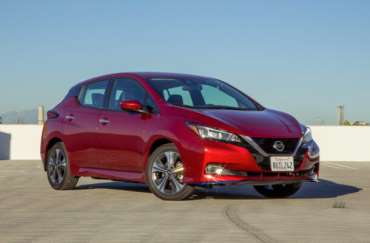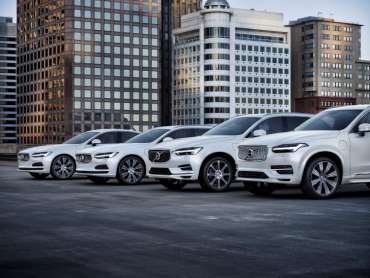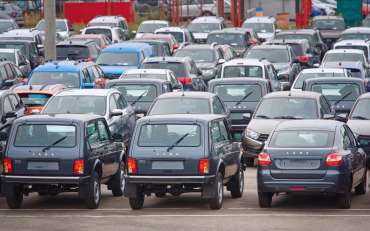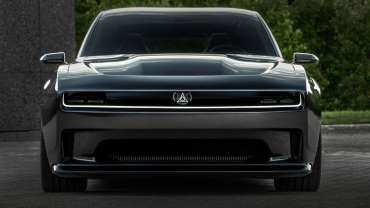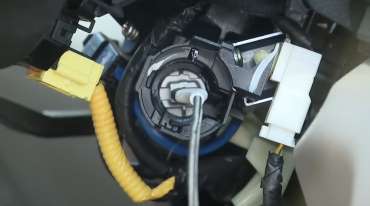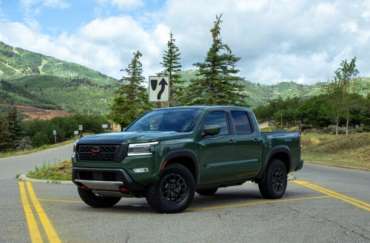
Worldcarblog.com
Nissan LEAF review: Model Lineup, Exterior, Interior, Driving Impressions
The Nissan Leaf is a front-wheel-drive hatchback electric car that seats five and comes very well equipped. It’s exceptional for its reasonable price, especially the version with 149 miles of range, although the costlier Leaf Plus, with its bigger battery pack, can go 226 miles.
That “reasonable” price is what’s new for 2022, as the cost of the entry-level S model drops more than $4,000, while other models are cut more; the SV Plus is more than $5,000 less than last year, and not only that, it gets a Technology Package with significant safety and convenience features. And for 2022 Nissan throws in even more: DC fast charging can do an 80% charge in 45 minutes.
The Leaf is no longer conspicuous as an electric car, as it was in the beginning. And the modern cabin boasts materials that are a cut above most economy cars. And there’s excellent cargo space, with 23.6 cubic feet behind the folding rear seat.
The electric motor in the base Leaf makes 147 horsepower, while the Leaf Plus makes 214 hp. But even that 147 hp provides quick acceleration in the city, while the light steering makes it fun. Out on the highway, the 214 hp of the Leaf Plus is appreciated.
The Leaf is aptly named, as it’s hard to find a car that’s any greener. The range of the base Leaf of 149 miles is shy of some rivals (all of them more costly), but the Leaf Plus can go 215 or 226 miles, depending on equipment, in particular the size of its wheels. On a Level 2 240-volt charger, the Leaf Plus can take as much as 12 hours to fully charge.
The NHTSA gives the Leaf five overall stars in safety, with four stars in the forward crash test. The IIHS hasn’t fully tested it yet, but notes that over the years, the Leaf has one of the lowest fatality rates among small cars.
Standard safety equipment includes automatic emergency braking, blind-spot monitors and active lane control. The SV and SL get adaptive cruise control and Nissan’s ProPilot driver-assistance system that can steer, stop, and start the car in many circumstances.
Model Lineup
Made in Japan, the base Leaf comes as S and SV, while the Leaf Plus comes as S, SV, and SL.
The Leaf S is $28,375. It’s equipped with DC fast-charging, cloth upholstery, an 8.0-inch touchscreen with Apple CarPlay/Android Auto, and 16-inch steel wheels.
The Leaf Plus S is $33,375, and for that extra $5,000 you get the 226-mile range, thanks to a larger 62-kwh battery pack. The SV is $36,375, adding navigation, a heated steering wheel, heated mirrors, adaptive cruise control, and Pro Pilot.
The $38,375 Leaf Plus SL adds leather upholstery and a Bose sound system.
The Leaf comes with a 3-year/36,000-mile warranty, but it’s the battery warranty that matters more: 8 years and 100,000 miles.
Exterior
The Leaf has lost the bulbous shape of its first generation, looking now like a traditional hatchback, with no signs that it’s an electric car. The lines are tidy and plain, and the details are a tiny bit sporty.
Like many Nissans, the Leaf has a strong V-shaped grille, complemented by black trim from the front to the rear and even up on the roof.
Interior
Even in the cabin, you can barely tell from the instrument panel that this is an electric car. The cabin materials are simple, and the standard cloth seats are preferable to the available leather. Many electric cars don’t absorb the tire and road noise at highway speeds, but the Leaf does that job very well.
The front seats have good padding and bolstering, but not-so-good support at the shoulders. And the steering wheel isn’t telescopic, so long-armed or short-armed drivers might find it awkward to find a comfortable seating/driving position.
There’s adequate room in the rear, and rear seat comfort itself is acceptable, with decent head and leg room. A six-foot passenger can fit behind a six-foot driver.
Surely there will be enough cargo space, with 23.6 cubic feet behind the split rear seat, and 30 cubic feet with it folded.
Driving Impressions
Forget about the Leaf being electric; the acceleration is smart for a small car, period. That’s true even with the base Leaf. However, out on the highway, where acceleration is more of a challenge coming on from 50 mph or more, you’ll feel the need for the Leaf Plus and its 62-kwh battery pack.
Both have a mode that enables driving with just one pedal; this is, regenerative braking occurs when you lift off the accelerator pedal. Some people like that, and from an efficiency standpoint it extends range because it recharges the batteries.
The Leaf isn’t nimble on account of its batteries’ weight, but Nissan engineers have done a good job of mounting that weight low in the car, so the Leaf is well balanced, and stable, even with a ride height that’s above most small cars. The suspension tuning isn’t perfect, as rough spots on asphalt come through, but it’s acceptably composed at nearly any speed.
Final Word
The 2022 Nissan Leaf puts economy-car goodness into its hatchback body, and powers it with electricity alone. That makes it one of the cleanest new cars you can buy—and with tax incentives and credits, it’s an affordable and pleasant way to make the switch from gas-powered cars.
Source: newcartestdrive.com
Factories are closing, sales are falling: Volvo is in big trouble
During the previous two years, Volvo was one of the few car manufacturers that, despite all the difficulties, recorded an increase in sales, but now they too have found themselves in a problem.
During August, the Swedish company delivered 43,666 vehicles to customers, a decrease of 4.6 percent compared to the same period last year. According to the official announcement, the reason for lower sales is the lack of microchips.
Although demand remained high, the Swedish company simply could not meet it due to disrupted supply chains and component shortages. However, in the meantime, another big problem has appeared for Volvo, and that is the increase in the number of people infected with the coronavirus in China. The Swedish company announced on Thursday that it was temporarily closing its plant in the city of Chengdu due to local restrictions on movement, and another Volvo plant in China has recently been affected by increasing shutdowns imposed by Chinese authorities to reduce the number of infections.
The factory in the Chinese city of Chengdu is very important for Volvo because their best-selling model – the XC60 – is produced there, and it is not yet known when this plant will be closed. In terms of sales, after the XC60, Volvo customers most often chose the XC40 and XC90 during August.
Sales of Lada in Russia jumped sharply, and the reason is known
During August, Lada saw a sales growth of as much as 75 percent in Russia, as a government subsidy program succeeded in boosting demand in the country.
Lada, which is part of AvtoVAZ, saw a sharp jump in sales in August, at a rather awkward time for Russia's auto industry, which has been in deep trouble since the start of the conflict in Ukraine.
The Russian brand sold a total of 18,087 passenger cars last month, a 75 percent jump from July. And while sales are down 7 percent from last August, it's Lada's best monthly sales since Russia sent tens of thousands of troops into Ukraine in February. Maksim Sokolov, president of AvtoVAZ, pointed out that sales of two Lada models, Grant and Niva, have already reached the level before this crisis, which he marked as an important step for this company towards recovery.
"We will successfully overcome the current difficulties and meet the demand on the Russian car market," the official statement said.
The company, which employs about 42,000 people, said a government subsidy program to help buy new cars helped boost demand. Russia's auto sector, which is heavily dependent on foreign parts and global supply chains, practically ground to a halt when sanctions were imposed on Russia following the invasion of Ukraine.
For example, car production in Russia fell by 97 percent in May as many companies, such as AvtoVAZ, were forced to close factories and offer workers severance packages to leave the company. However, it should be noted that the cars currently produced by Lada are actually rudimentary versions, without numerous equipment such as ABS, ESP, airbags and electric windows.
2024 Dodge Charger
There's no better indication that electric vehicles are taking over than the 2024 Dodge Charger concept, shown first in high-performance Daytona SRT trim. Electrifying one of the brawniest muscle cars is a big undertaking, but it's one that comes with big performance payoffs. The next-generation Charger will likely ride on Stellantis's upcoming large electric vehicle platform which is said to deliver up to 500 miles of range. Of course, dialing up the performance to Hellcat levels will likely result in a lower range estimate.
Speaking of which, Dodge has not released much information about the new Charger’s powertrain, but in a YouTube teaser video for the Daytona SRT version we can clearly see the car pulling off a four-wheel burnout. The new car’s styling is clearly a nod to classic Challenger and Charger models and the return of the Fratzog logo, which was used on Dodge vehicles from the 1960's and 1970s. Unlike the outgoing generation, the new Charger is set to be a two-door coupe with a liftback trunk. To make sure it adheres to the Dodge brand values, the Charger Daytona SRT concept features a unique chambered exhaust system that is said to imitate the sound of the outgoing supercharged V-8 SRT Hellcat model.
What's New for 2024?
The next-generation Charger will be an all-new vehicle for the Dodge lineup when it goes on sale, likely for the 2024 model year. It's possible that a four-door variant will join the lineup too, but we won't know more about either car until closer to launch.
The new Charger is expected to carry a price premium over the outgoing gasoline-powered models, but the prices listed here are merely estimates. The 2024 Charger will likely be offered in a variety of trims, including performance versions wearing the R/T and SRT names. We'll update this story with more information and a recommendation on which model represents the best value when we learn more.
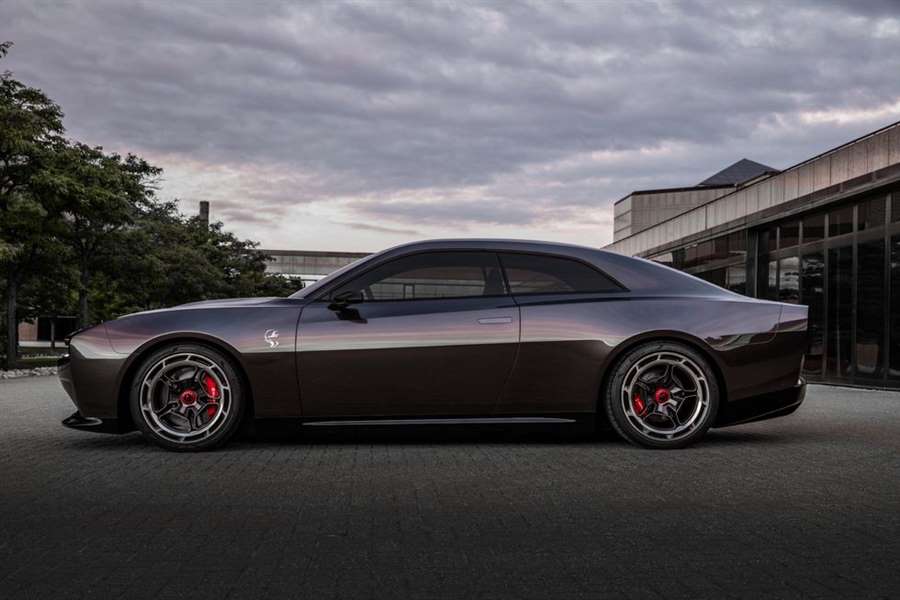
EV Motor, Power, and Performance
Dodge hasn’t said how many motors will power the various trims of the new Charger or how much combined horsepower they’ll pump out, but we know the Daytona SRT concept uses a new all-wheel drive 800-volt architecture the company has dubbed Banshee. In addition to that, we also know that instead of a typical EV direct-drive setup, the show car uses a multi-speed transmission. This isn’t a unique concept, as the Porsche Taycan also offers something similar, and this setup is designed to improve performance and range at higher speeds. It also gives the driver the feel of a gear change under hard acceleration.
Interior, Comfort, and Cargo
Rather than follow the conventional format of four doors, the Charger concept is rendered as a coupe. The trunklid is a liftback-style piece that opens up to a large cargo area, and Dodge says the rear seats fold flat to create extra space for hauling bigger items—say, for instance, a set of fresh tires. We can also see a large panoramic glass sunroof, a cool pistol-grip shift lever, and a fighter-jet-style cap for the ignition switch that flips open. The interior design blends modern technology with retro design themes and even includes a textured trim that’s intended to replicate the grille treatment from the 1968 Charger.
Infotainment and Connectivity
In sketches of the Charger Daytona SRT concept’s interior, we can see a trapezoidal-shaped infotainment touchscreen in the center of the dashboard and an oblong digital gauge display that appears to a slight curve to it. Whatever the final design will be, the next-generation Charger will undoubtedly offer the latest version of Stellantis’s Uconnect infotainment interface and is expected to offer popular features such as wireless Apple CarPlay and Android Auto connectivity, on-board Wi-Fi, and over-the-air update capability.
Source: caranddriver.com
German manufacturers warn: There are more and more fake spare parts
German car manufacturers warn that there are more and more fake auto parts on the market. It harms them, and it can be very dangerous for road users.
When Lita Silje Jeniš talks about her job, she sounds like a police detective. A story about raids, hidden production facilities, about organized crime. A story about a network of counterfeiters, about people who organize it all, about seizures. However, Jeniš does not work in the police.
She is a lawyer and works for Mercedes-Benz. It deals with brand protection and tries to detect counterfeit Mercedes parts and remove them from the market.
"Counterfeit products pose a significant risk to customers," says Jenish.
For example, brake parts with less valuable components, which in practice means a longer braking distance. Or brake discs that contain toxic substances such as lead or arsenic. Windshields made of ordinary window glass. Air filters that are not made of fire resistant material. The list is long.
More and more fakes
According to data from car manufacturers, counterfeit parts are often discovered and withdrawn from sale. Volkswagen announced that counterfeit parts worth 14 million euros were seized last year for that brand of vehicle alone. That is almost twice as much as a year earlier (eight million).
More than 1.86 million counterfeit parts were discovered at Mercedes in 2021 as part of 650 raids by the German authorities. That is six percent more than in 2020.
"There is nothing that is not there," says lawyer Jeniš. The offer includes Mercedes stars, aluminum rims, airbags, windshield wipers, and even parts for brakes and spark plugs for the engine.
Engineer Thomas Schuster from the KÜS organization, in charge of the technical inspection of vehicles, says that this trend is increasing. Some parts, he says, are of such poor quality that they can endanger traffic safety. But there are also parts that are good enough, so to speak, faithful copies of the original - this in turn causes huge economic damage to the manufacturers.
Danger for road users
Counterfeit parts are often quickly detected during a technical inspection of the vehicle, at least those that are visible at first glance. Original parts or parts that have been "copied" with the express permission of the manufacturer have a control number on them. But what about the parts that aren't visible unless the car is taken apart?
"Air filters, spark plugs or brake discs are installed so we can't see if they're counterfeit," notes Schuster. In contrast, fake rims or lights are easy to see. The latter is dangerous in traffic because bad headlights can dazzle drivers from the opposite direction.
Often the drivers themselves can suspect that they are being tricked by a fake.
"Consumers should be aware that in the case of a large price difference compared to original parts, something is simply not right," says Schuster.
The automotive industry invests great efforts in the fight against counterfeit parts. The VW concern has strengthened its cooperation with the authorities in Germany and abroad. Mercedes, as lawyer Jeniš says, collects information, cooperates with customs, digs online stores and helps investigative authorities during raids.
Porsche did not provide specific data on counterfeits, but they said that they are carefully monitoring what is happening on large platforms such as eBay, Amazon or Alibaba.
How easy it is to steal a Hyundai and Kia car (VIDEO)
The city of Milwaukee in the US state of Wisconsin is not the center of events when it comes to the automotive industry. It's home to Harley Davidson and has a few interesting museums, but other than that, with a population of just over 650,000, there's hardly anything interesting about it. But, during the past year, Milwaukee has suddenly become the topic of writing for almost all automotive media, and the reason lies in the huge number of four-wheeler thefts.
The largest city in Wisconsin is not even among the top thirty in terms of population, but it is among the ten "most popular" when it comes to car theft.
And in most cases (to be precise, in 68% of cases) the choice falls on vehicles of two brands, those with Hyundai and Kia emblems. The situation has gotten so bad that the city of Milwaukee filed a lawsuit against the South Korean giant for making its models easy to steal, forcing the police force to spend more money to track down the criminals. You can read more about it here. Those who engage in this illegal activity introduce themselves under the name "Kia Boyz".
The trend later spread to other cities in the United States of America, and on social networks the Kia Boyz are currently bragging about who is able to steal the fastest and most cars. In most cases, driving a stolen vehicle lasts for several hours before it is disposed of and found by others for the same purpose.
So why would anyone steal a Hyundai or a Kia? If someone is going to risk their freedom, shouldn't they find themselves behind the wheel of a Mercedes or a Lexus? Well, the reason is the one we have already mentioned, and it lies in the fact that the vehicles of the Korean manufacturer are incredibly easy to steal. Getting into the car itself is the easiest part of the job and mostly relies on the technique of breaking the window, or for those slightly more expert thieves, picking the lock.
If you don't have a key (real or digital), the next step is generally more difficult for modern cars, but not for Hyundai and Kia manufactured before 2021. Namely, all you need to do is turn the lock next to the steering wheel and start the car with an ordinary USB cable (which we all probably have for charging mobile phones). The attached video from the YouTube social network shows us how easy it is to do something like that.
Sentences for theft range from up to 42 months in prison, but in most cases it is difficult to detect the perpetrators as they find a new victim before the owner even notices that their pet has been stolen.
Executives at the Korean giant tell us the problem has been fixed for the 2022 model year, but there are still plenty of older models on the streets that, as the line from that iconic movie says, "can disappear in sixty seconds." For those unlucky people who are forced to park outside the garage and thus risk having their pet stolen, the police force recommends that the car be parked in well-lit areas, that a system be installed where it is possible to manually turn off the battery via a switch, and perhaps choose a model with a manual gearbox, since it is known that "over the pond" most drivers do not know how to use it.
And if none of that "works", then it is mandatory to have insurance, so at least in a financial sense, you will not feel the theft.
{vembed Y=ziFGU_NOZ9w}
2022 Nissan Frontier Review: Model Lineup, Exterior, Interior, Driving Impressions
The Nissan Frontier pickup truck has been redesigned for 2022. It’s more modern, with good technology in the cabin and a ride quality to meet the standards of today. In addition to a new cabin and suspension, the chassis has been revised and the exterior styling gets a full makeover.
The Frontier remains mid-sized with the same wheelbase of 126 inches and the same 5-foot bed on the crew cab, and longer wheelbase with 6-foot bed on the extended cab. But the overall length of both versions has been increased by 4.5 inches, all at the grille and front bumper.
The new Frontier is still brawny, if less distinctive because so many trucks since then have gone for a similar look. The 2022 Frontier has bulging fenders and a long sculpted hood that protects its 3.8-liter V-6. It produces 310 horsepower and 281 pound-feet of torque, mated to a 9-speed automatic transmission.
The drivetrain powers the rear wheels in standard configuration, while part-time 4WD with hill descent control is available. It’s a solid powertrain, the engine smooth and transmission responsive. It can tow 6,720 pounds–that’s the two-wheel-drive extended cab which comes standard with a trailer sway control, a system that automatically dabs the brakes if it feels anything starting to wander.
The new Frontier also handles better, with less body roll thanks to a bigger stabilizer bar in front and revised bar in the rear.
The Pro-4X model, for serious off-road use, comes with Bilstein dampers, skid plates to protect the bottom of the engine, transfer case, and fuel tank, plus a Dana rear axle and electronic locking rear differential, There’s also a Pro-X without 4WD, with just the Bilsteins but all the looks, including 32-inch Hankook all-terrain tires mounted on 17-inch alloy wheels.
The cabin catches up in technology, with an 8.0-inch touchscreen with Apple CarPlay/Android Auto, a 7.0-inch info display, and four USB ports.
The EPA rated the rear-wheel-drive Frontier at 18 mpg city, 24 highway, 20 combined, with the four-wheel drive at 17/22/19 mpg.
It hasn’t been crash tested yet, and automatic emergency braking is not standard. Blind-spot monitors, automatic high beams, and a surround-view camera system can be ordered.
Model Lineup
Made in Mississippi, the Frontier comes in S, SV and Pro-X models, with RWD or 4WD, and as an extended cab or crew cab.
The Frontier S starts at $29,015 for the 2WD extended cab, or $30,515 for 2WD crew cab. Four-wheel drive adds $3,200 or $3,000, respectively. It’s equipped with Bluetooth, four USB ports, LED taillights, 16-inch steel wheels, and trailer sway control.
The SV costs $31,715 and adds a power driver seat, 17-inch alloy wheels, a tow-haul driving mode, power mirrors, and automatic emergency braking.
The list of optional equipment includes heated front seats, a Fender sound system, and surround-view camera system.
The $35,415 Pro-X and $38,415 Pro-4X are crew cabs. They have a 9.0-inch touchscreen with navigation, 18-inch alloy wheels, more skid plates, and Bilstein shocks.
Exterior
The Frontier has been more than redesigned, it’s been transformed into an angular and boxy-ish truck that’s the style today. The word Frontier appears large on the tailgate, which for 2022 is damped so it can’t slam down, or up.
The bulging and boxy fenders suggest a boxer’s shoulders and biceps. The details of the Pro-X make it look even tougher, with a highly visible skid plate in front, red tow hooks that stick out of the fascia, vertical intakes for cooling air, black alloy wheels, and LED daytime running lights.
Interior
The Frontier’s redesigned interior is much better than that in the previous truck. Make no mistake, it’s rugged like the exterior but more tranquil, with better materials and sound deadening. On the freeway, the cabin is almost silent.
A large touchscreen and intelligently located controls give the cabin a better attitude for hard work. It’s outfitted with lots of storage, and after a full day’s drive, the front seats proved their worth with good support.
The back seat’s better used for tools and equipment in extended-cab form. Its rear seat is a tiny bench. In the crew cab, back-seat passengers get more space to stretch out.
Driving Impressions
For a truck, the Frontier is reasonably rapid, with more than enough power for passing, with 310 horsepower and 281 pound-feet of torque from its 3.8-liter V-6. It uses a 9-speed automatic whose first three gears have low ratios that quicken the acceleration from a standing start and at low speeds. Cruising in higher gears, it responds reasonably quickly when the driver asks for more acceleration, without the hesitation we’ve experienced with rival 9-speeds.
The tow limit is 6,570 pounds and payload limit 1,480 pounds.
But it’s the ride where the Frontier excels. Its frame has been reinforced and its suspension has been retuned to improve stability. The new Frontier is so composed we might say it’s uncanny, at least compared to the old one.
The steering is quicker than the old truck, too, and that’s especially felt around town.
The Pro-4X, with Bilstein shocks, is more capable over rocky ground than the previous version.
Final Word
The 2022 Nissan Frontier has been completely redesigned, and it’s now one of the leading mid-size trucks. It’s a solid all-around performer, with the latest in technology available or standard across the board. Make it an SV—and make it a crew cab for the best value and utility.
Source: newcartestdrive.com

